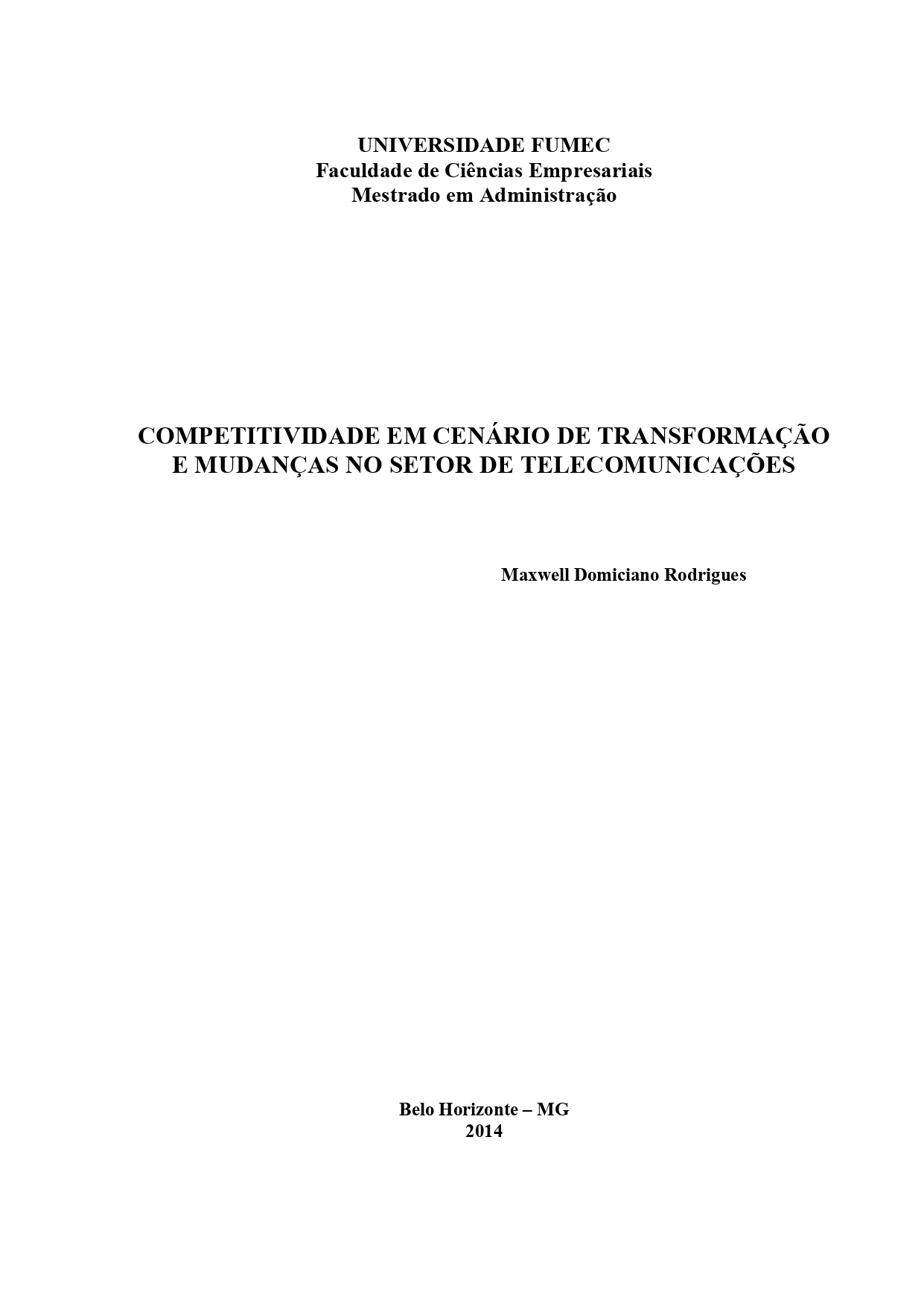Competitividade em cenário de transformação e mudanças no setor de telecomunicações

Visualizar/
Data
2014Autor
Rodrigues, Maxwell Domiciano
xmlui.mirage2.itemSummaryView.MetaData
Mostrar registro completoResumo
O setor de telecomunicações vem sendo considerado uma peça essencial na infraestrutura e,
por isso, um componente relevante nos desenvolvimentos econômico e social dos países. O
setor, no Brasil, vem passando por muitas mudanças desde a privatização sendo caracterizado,
portanto, por ser um setor de intensas transformações. Este estudo tem o objetivo de analisar a
competitividade e o desempenho do setor de telecomunicações brasileiro. Dentre os diversos
modelos pesquisados, optou-se por analisar e aprofundar o modelo proposto por Ferraz et al.
(1997) que se divide em três fatores de competitividade: os fatores sistêmicos, os fatores
empresariais e os fatores estruturais. A pesquisa foi de natureza descritiva exploratória e, por
isso, limita-se a traçar o panorama do setor de telecomunicações sem gerar efeito de causa das
variáveis envolvidas. O cenário analisado compreende o período que antecedeu o processo da
privatização até o ano de 2013. Ao analisar e descrever os principais fatores estruturais
envolvidos na análise, buscou-se evidenciar os fatores que destacassem a competitividade e o
desempenho do setor de telecomunicações. Assim, destacou-se, no fator sistêmico, a
desconcentração do setor que é formado em sua maior representatividade pelas empresas
prestadoras de serviço de telecomunicações. No fator estrutural, a relevância fica por conta do
desenvolvimento da oferta de produtos e serviços. Quanto ao fator empresarial, destacam-se
os efeitos da renovação dos padrões tecnológicos e o reflexo sobre o aumento do nível de
emprego e da produção da atividade industrial. Entendeu-se que o setor possui
competitividade e isso instiga novos estudos, inclusive comparativos. The telecommunications industry has been considered a relevant element in the infrastructure
and therefore an important component for economic and social development of countries. The
industry in Brazil has undergone many changes since privatization and due to this it is
characterized as a sector of intense changes. This study aims to analyze the competitiveness
and performance of the Brazilian telecommunications sector. In a context of many options it
was decided to analyze and develop the model proposed by Ferraz et al. (1994). This model is
divided into three competitive factors: systemic factors, business factors and structural factors.
The research was descriptive exploratory in its nature, and therefore merely outlined the
scenario of the telecommunications industry without generating effect because of the
variables involved. The scenario analyzed included the period before the privatization process
to 2013. Analyzing and describing the main structural factors involved, the factors that
highlighted the competitiveness and performance of the telecommunications sector were
investigated. Thus stood out the deconcentration of the industry in the systematic factor,
which is mostly composed by companies that provide telecommunications services. In the
structural factor, the relevance is for the development of product and services to be offered.
As for the business factor, what stands out are the effects of the renewal of technological
standards and the reflection on the increased level of employment and production of industrial
activity. It was understood that the sector has competitiveness and this instigates new
comparative studies.
